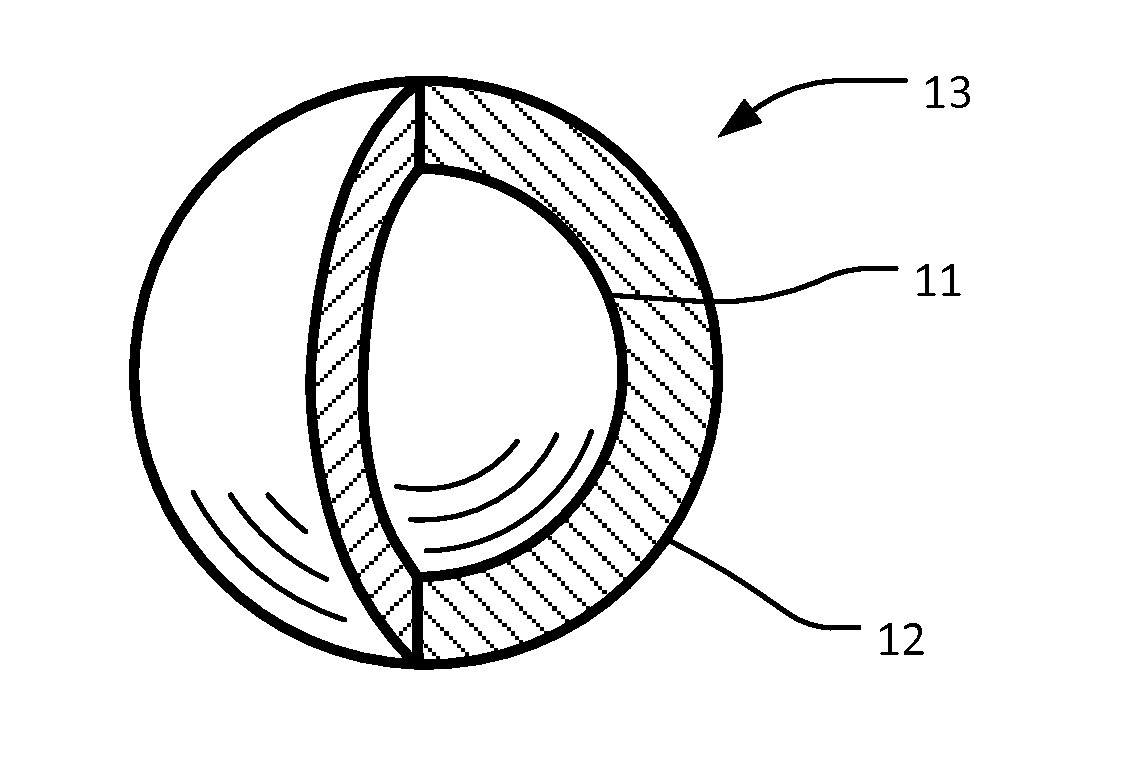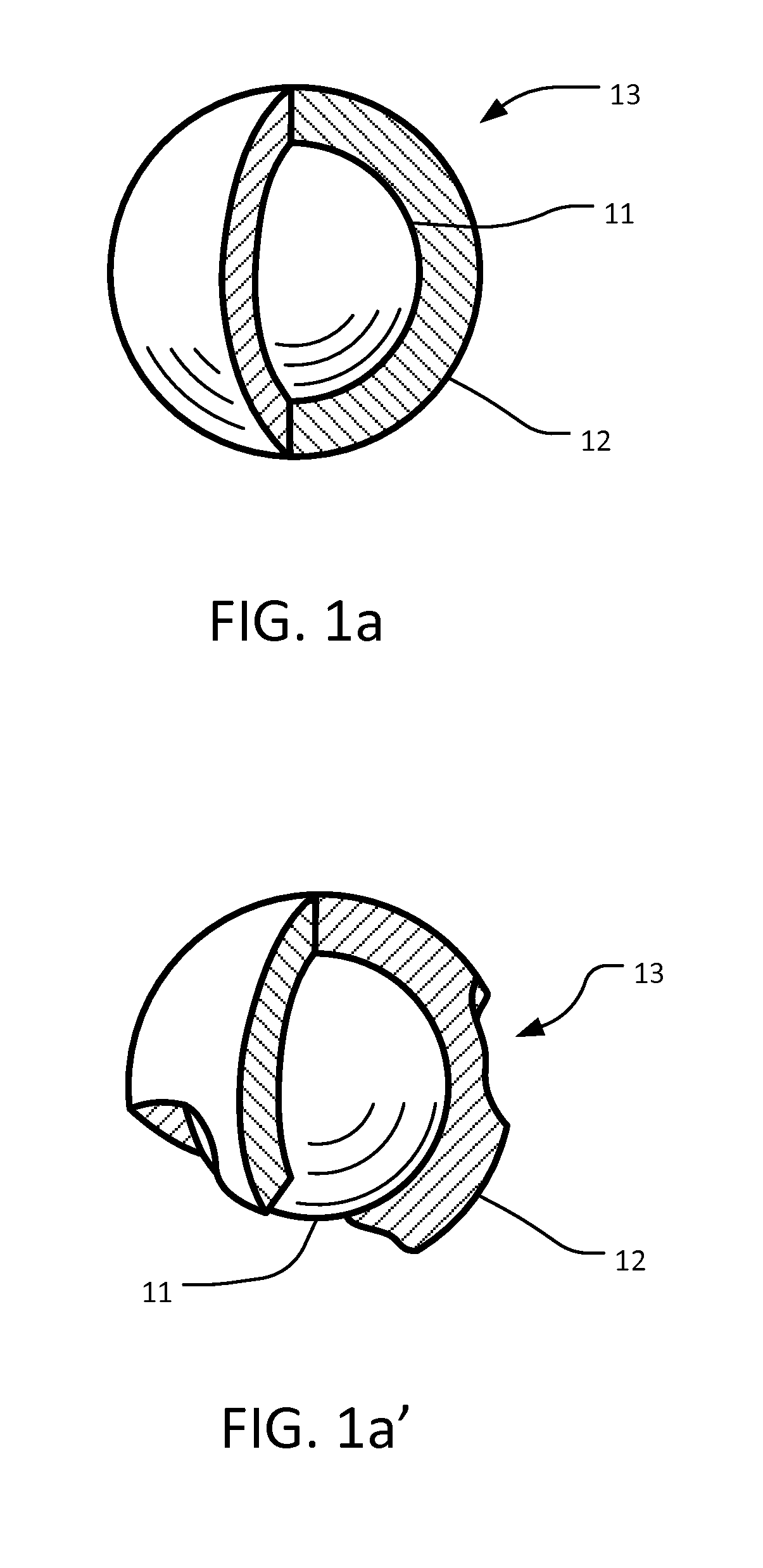Liquid developer containing electro-conductive particles and an electro-conductive pattern forming method using said material and an electro-conductive pattern forming apparatus using said material
a technology of liquid developer and electro-conductive particles, which is applied in the direction of developers, electrographic process equipment, instruments, etc., can solve the problems of not being able to produce variable patterns within a single set of screens, not being able to meet the requirements of high production volume, and not being able to produce variable patterns within a single set of plates
- Summary
- Abstract
- Description
- Claims
- Application Information
AI Technical Summary
Benefits of technology
Problems solved by technology
Method used
Image
Examples
operational example 1
[0058]Cu—Ag 13 particles were prepared with following method: 4 g of copper (II) sulfate pentahydrate was dissolved in 400 g of purified water, then 4 g of ammonia water was added while stirring. Additionally, 8 g of ethylenediaminetetraacetate tetrasodium salt (EDTA 4Na) was added while stirring. Separately, 0.1 g of bipyridyl was dissolved in 8 g of ethyl alcohol, then it was added to the above copper sulfate solution to prepare the plating solution. 200 g of silver particle S211A (manufactured by Daiken chemical Co., Ltd., average particles diameter 1 μm) was added to the plating solution and dispersed for 2 minutes with 9500 rpm spin on the homogenizer. Then 4 g of formalin was added slowly while stirring at 100 rpm, heated at 40° C.˜50° C. and continued stirring for 30 minutes. After this process, it was rinsed 3 times with purified water, then dried for 2 hours at 80° C., resulting in Cu—Ag 13 particles.
[0059]A solution for forming a charge control agent 15 was prepared accord...
operational example 2
[0065]Silver-plated copper particles can be obtained commercially as well as they can be manufactured through the method such as shown in the Japanese Patent Laid-Open No. 2001-214080 bulletin.
[0066]A solution for forming a charge control agent was prepared according to the following method: 1.0 g of oleic acid was dissolved in 100 g of ethyl alcohol placed in a container.
[0067]Conductive toner particles 16 were formed by providing 200 g of the aforementioned Ag—Cu 14 particles, in addition to 5 mm glass beads, to a container of the aforementioned solution. It was rotated for 4 hours on a ball mill rotation platform at 100 rpm speed. The glass beads were then separated out, and the remaining coated particles were dried at 80° C. for 1 hour in a dryer, resulting in conductive toner particles 16.
[0068]The liquid developer 47 was prepared for Example 2 by providing 0.56 g of Luviskol VA64P (vinyl acetate-vinyl pyrrolidone copolymerized resin, made by BASF), dissolving it in a mixed sol...
operation example 13
[0072]Charge control agent 15 was changed to “G: WP-660” as follows. All other variables were the same as Operational Example 1.
[0073]7.5 g of Ganex WP-660 (alkylated polyvinylpyrrolidone, made by ISP Japan) was added to 50 g of Isopar L (made by ExxonMobil) and heated to 80° C. to dissolve and let it cooled down to the room temperature. This solution was slightly milky. 100 g of copper plated silver (Cu—Ag 13) particles prepared by the same method as Operation Example 1 were added to the solution and additionally 250 g of alumina balls of 5 mm diameter were added. They were placed and sealed in a container and rotated at a rate of 90 rpm for 2 hours on a ball mill rotation platform. When it was finished, the whole content was taken out and the alumina balls were separated. The liquid developer was prepared after 160 g of Isopar L was added.
PUM
 Login to View More
Login to View More Abstract
Description
Claims
Application Information
 Login to View More
Login to View More - R&D
- Intellectual Property
- Life Sciences
- Materials
- Tech Scout
- Unparalleled Data Quality
- Higher Quality Content
- 60% Fewer Hallucinations
Browse by: Latest US Patents, China's latest patents, Technical Efficacy Thesaurus, Application Domain, Technology Topic, Popular Technical Reports.
© 2025 PatSnap. All rights reserved.Legal|Privacy policy|Modern Slavery Act Transparency Statement|Sitemap|About US| Contact US: help@patsnap.com



